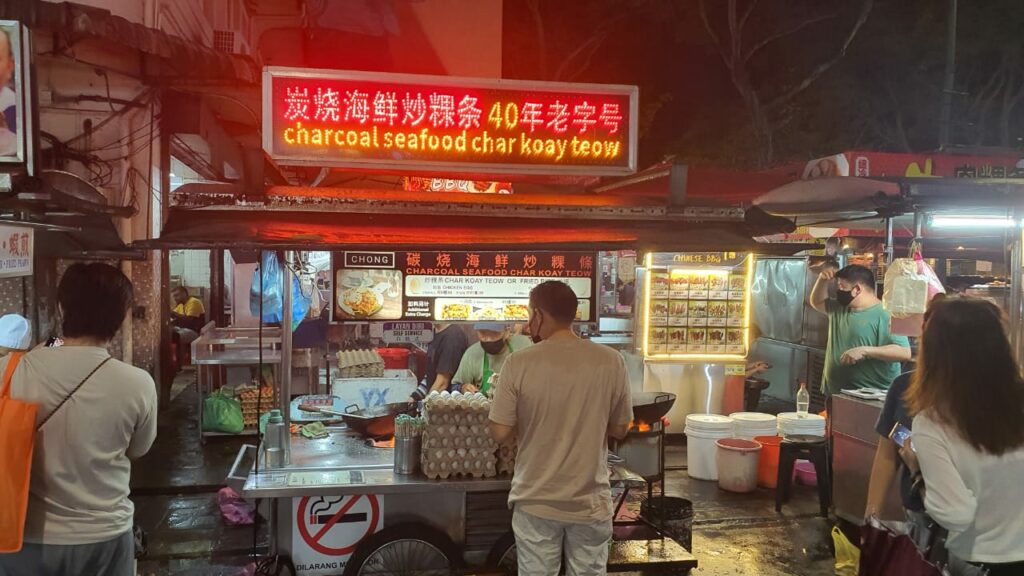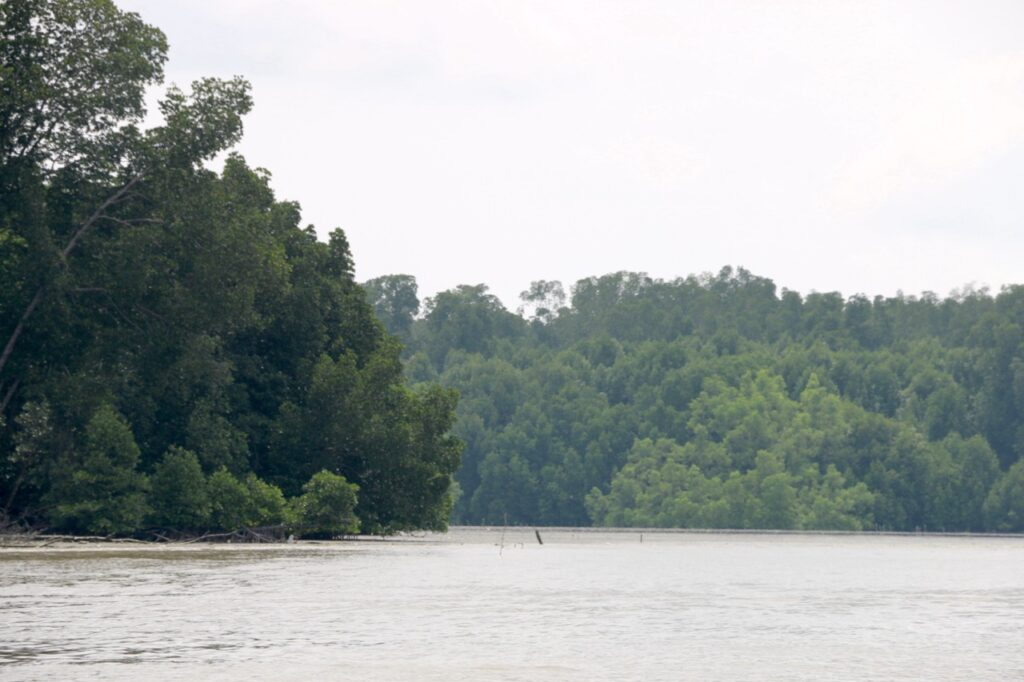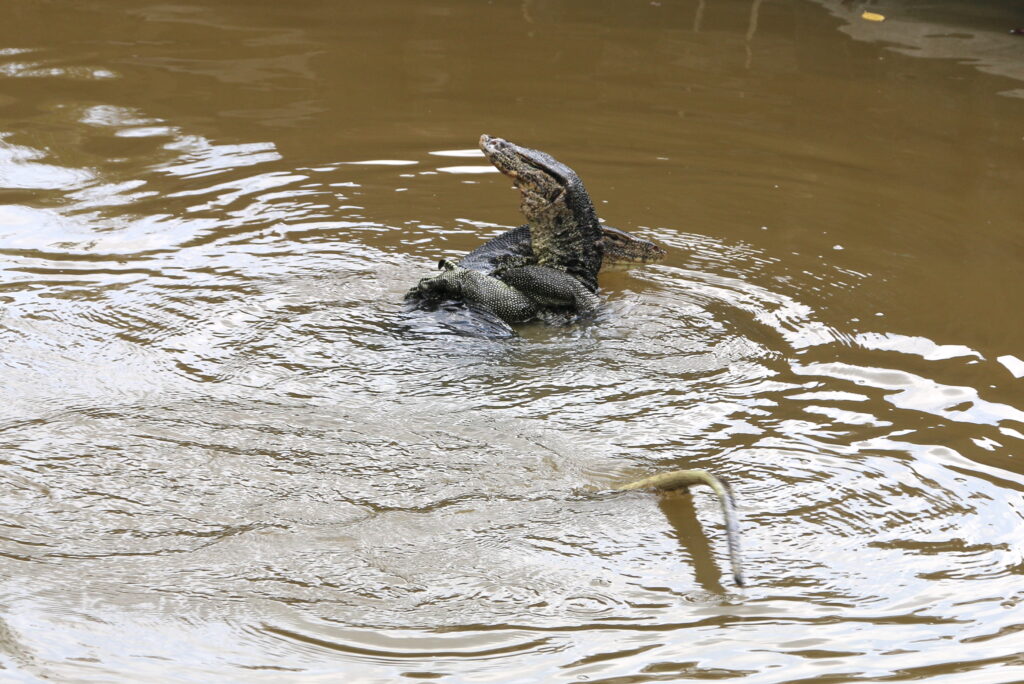I’m wrapping up a six month Fulbright Scholar Fellowship in Penang where I have been hosted by the History Section at Universiti Sains Malaysia. Upon settling in, a staffer in the dean’s office told me I was in the very same office they gave to Professor Barbara Andaya, author of many books including a famous one on Perak and one of my all time professor-heroes; so from the beginning things got off to a great start. My project here is a departure of sorts from a career spent studying environmental history in Vietnam: undertaking a comparative study of urban waterfronts in Southeast Asia. The thing about doing this sort of “nerd” (academic) research — and what I deeply respect and love — is that it requires the researcher to go deep, visiting unusual places, listening to stories, reading unusual stuff.
Studying a new place in this way means learning new languages (Malay, also Chinese), building new institutional partnerships, and being the naive grad student again — thinking you know something only to be completely bewildered (or amazed) (or both) by what you find. Very briefly, I’m interested in Southeast Asia’s urban waterfronts because they are vital to the economic future of the region, most were just swamps 150 years ago, and today most are threatened by increasing sea levels. Several scientific (but alarmist) studies show that Southeast Asian cities will face the greatest challenge in terms of land loss and relocating millions.
It’s true there is concern in the region about rising sea levels, but I think what people far off (including me) forget about places like Vietnam and Malaysia is that millions of people have been living on the water’s edge — and I mean living in homes on piers just above the high tide mark — for centuries. Here’s a view of one such waterfront in George Town (Penang) with it’s fringe of jetties and behind them are some of the first public housing tenements built on reclaimed mangrove forest.

Another thing that’s important when we think about “shorelines” is that for centuries these have been subject to modification; and for people with in-between legal status or limited job prospects, frequently these movable shorelines are the only place one can call home. This particular stretch of George Town’s waterfront is called Weld Quay and it was the industrial/business end of the waterfront. This is where thousands of mostly Chinese and Indian migrant shore laborers lived in the early 1900s as George Town was booming with the tin trade. Larger cargo ships anchored offshore while hundreds of “tongkang” boats carried raw materials like iron or tin ore, charcoal, food and timber in and processed goods out. (This historical image is courtesy of the Tropenmuseum in Amsterdam.)

While many of these vessels around Penang were crewed by Chinese sailors, the origin of the name is not Chinese but Malay and the boat style dates back several centuries, as a bělongkang. In English they were called “lighters” and their job was to “light” the cargo from docs to ships or vice versa.
I’m interested in waterfronts like Weld Quay because they represent the major center where carbon fuels (charcoal, later coal and petroleum but also food to energize thousands of laborers) entered the city.
Even today, in the Weld Quay area, some of the most delicious street food, like charcoal cooked Char Koay Teow is served. Penang is a food mecca on Earth!

(This image courtesy of Taufulou.)
So my research around Penang has taken me to sources of the city’s carbon — until as late as 1950, it was NOT coal, NOT petroleum but mainly CHARCOAL – specifically pyrolized mangrove trees. How did a city of 500,000 in the mid-20th century get by without gasoline? Of course they had it, but personal motorbikes and cars were rare. There was abundant petroleum in Penang because it sits across the Straits of Malacca from major offshore oilfields in Medan and Pekanbaru (Sumatra). But the city’s largest industries — tin smelters — didn’t use petroleum or coal (too much sulfur) but charcoal for their blast furnaces. So my study in Penang has been focused on charcoal and more generally on biofuels in SE Asia.
And it turns out a lot of early Southeast Asian cities used charcoal because it was easily floated to port and came from a convenient coastal wood source: mangroves.

Making charcoal from “bakau” is actually a very ancient practice. On the Malay Peninsula just north of Penang is an archeological site “Sungan Batu” where brick jetties stretched out into a mangrove area and furnaces smelted iron into ingots for export. This is an ancient tuyere – an air pipe that funneled air into an ancient furnace heated by hot charcoal to keep the temperature high enough for smelting.

Archeologists debate when people here were smelting iron, but a safe guess is about the 5th century CE, and the people here exported iron ingots (used by blacksmiths to make tools) along with other stuff – glass beads, ceramics, probably aromatic woods like agarwood – in the ancient India – China sea trades. When we look at the brick terraces and jetties from then, we can see, all around them, are mangrove trees. This association of coastal cities in Southeast Asia with these incredibly vibrant, tropical coastal ecosystems has continued from the earliest historic era right down to the present.
When we think about modern cities, their formation, and problems associated with the carbon cycle and climate change today, I think we need to pay more attention to the unique carbon-fuel “mixes” from which they have emerged. Southeast Asia’s coastal cities are tropical with high humidity, high water marks and abundant, fast-growing plant life all around them. Urban life here is different than, say, a temperate great plains city like Beijing or Chicago where rail lines, coal and other fossil fuels are essential for their survival.
Work continues with co-authors on essays — possibly a book down the road — and for those interested in more, I gave a talk last week on August 29th for people at the venerable Penang Institute that is now posted. Note: You may need to scroll forward to the 11 minute mark.)
I’ve just returned to Riverside, super jet lagged but happy with an amazing six-month stay. I could not have done anywhere near as much as I managed to do without the help of my friend and “brother” in Penang, Dr. Tan Chee Seng, and thanks to the help of many other fine people including the Fulbright staff at the Malaysian American Committee for Educational Exchanges (MACEE), USM College of Humanities and the USM History Section.
Thanks to all of my friends for an epic stay! Big hugs!

